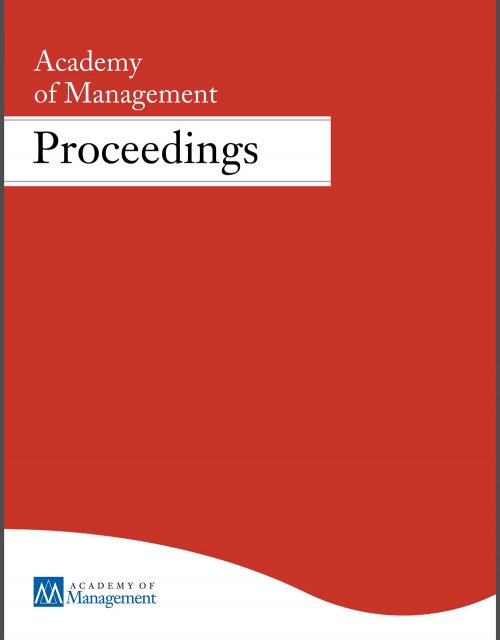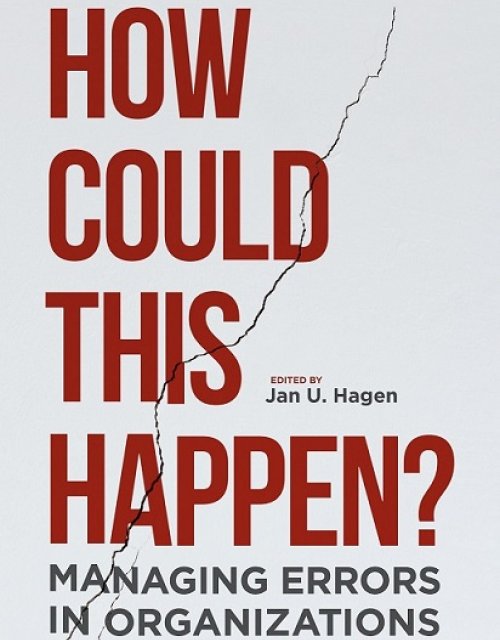Publication records
Subject(s)
Economics, politics and business environment
Keyword(s)
Default options, online platforms, charitable giving, field experiment
JEL Code(s)
D03, D01, D64, C93
Pages
92
ISSN (Online)
2190-9938
Subject(s)
Technology, R&D management
Keyword(s)
Patent, pharmaceuticals, drug development
Firms in the pharmaceutical industry typically rely on a period of market exclusivity derived from patent protection and data exclusivity to recoup their investments in R&D. The invalidation of patent rights during drug development renders data exclusivity the sole source of protection and shifts the period of market exclusivity at the project level. Invalidation therefore constitutes a natural experiment that allows us to identify how the duration of market exclusivity affects firms' incentives to innovate. Our analysis is based on a novel data set that links the development histories of drug candidates with underlying patent data. We identify causal effects relying on an instrument for the potentially endogenous patent invalidation. Our findings highlight that shorter durations of market exclusivity reduce the hazards of successful drug commercialization.
With permission of the Academy of Management
Volume
2018
ISSN (Online)
2151-6561
ISSN (Print)
0065-0668
Subject(s)
Economics, politics and business environment
While we know much about how networks shape organizational performance, we know less about the linkages between networks and performance in the aftermath of exogenous, industry-wide shocks. We examine how the dot-com crash of 2000 affected investment banks’ ability to convert three facets of their positions in inter-firm networks–structural holes, status and fragility–into future performance. We find that the post-crisis performance of banks rich in structural holes does not exceed that of banks in closed networks. Conversely, high-status banks lose their advantage relative to low-status banks, while banks in fragile network positions outperform their robustly positioned peers. External shocks can thus turn the tables–dethroning organizations in typically advantaged network positions, while also opening up new opportunities for their fragile counterparts.
With permission of the Academy of Management
Volume
2018
ISSN (Online)
2151-6561
ISSN (Print)
0065-0668
Subject(s)
Economics, politics and business environment; Entrepreneurship
What should a CEO do to increase the social multiplier of a startup? What organizational strategy, in other words, should a manager adopt to shape informal social interactions among employees, so that they perform better in the office than if they telecommuted? We develop a network-based model that contrasts two opposing approaches. The first, consistent with Coleman’s vision of social capital, is embedding. Using an embedding strategy, the CEO fosters strong and dense ties among employees, and thus seeks to raise productivity by facilitating knowledge spillovers and creating social pressure. The second, keeping with White’s theory of social control, is decoupling. Using a decoupling strategy, the CEO promotes weak and sparse connections among employees, and so tries to increase productivity by minimizing distraction. Our findings indicate that, while embedding is generally preferable to decoupling for most kinds of organizations, decoupling is clearly preferable when two conditions are jointly met: the organization’s distribution of human capital is left-skewed and it is populated more by “slackers,” who “look down” in order to self-enhance, than by “climbers” who “look up” to self-improve. Our results also suggest that the zone of network irrelevance–that is, the space of possibilities over which the CEO’s efforts to rewire the network will prove inconsequential–paradoxically contracts as the firm grows: counter to a prevailing picture of small firms as inherently malleable, our model suggests that a CEO achieves less through shaping informal social interactions when the organization is not yet at scale. Implications for future research on networks and organizations are discussed.
With permission of the Academy of Management
Volume
2018
ISSN (Online)
2151-6561
ISSN (Print)
0065-0668
Subject(s)
Human resources management/organizational behavior
Keyword(s)
Team interaction, error management, leadership, communication
Secondary Title
How could this happen? Managing errors in organizations
Edition
1st ed.,
Pages
233–251
ISBN
978-3-319-76402-3
ISBN (Online)
978-3-319-76403-0
Subject(s)
Human resources management/organizational behavior
Keyword(s)
Error management, organizational learning, strategic error, leadership
Even today the reality of error management in some organizations is simple: “Don’t make mistakes." But it is still often centred around quality control, with Six Sigma Black Belts seeking to eradicate errors with an unattainable goal of zero. But the best organizations have moved on. They understand that mistakes happen, be they systemic or human. They have realized that rather than being stigmatized, errors have to be openly discussed, analysed, and used as a source for learning.
How Could This Happen? collects insights from the leading academics in this field – covering the prerequisites for error reporting, such as psychological safety, organizational learning and innovation, safety management systems, and the influence of senior leadership behaviour on the reporting climate. This research is complemented by contributions from practitioners who write about their professional experiences of error management. They provide not only ideas for implementation but also offer an inside view of highly demanding work environments, for example, managing innovation at BMW, flight operations in the military, and commanding nuclear submarines.
Every organization makes mistakes. Not every organization learns from them. It’s the job of leaders to create the culture and processes that enable that to happen.
Pages
292
ISBN
978-3-319-76402-3
ISBN (Online)
978-3-319-76403-0
Subject(s)
Information technology and systems
Keyword(s)
Machine-based learning, decision making, complex systems
In March 2016, Google machine AlphaGo won against Lee Sedol, arguably the best human Go player of the last decades. This was the first time a Go grandmaster succumbed to a machine. Go was arguably the most complex board game ever invented, and to play the game, Go grandmasters exploited exceptional levels of intuition built through years of practice. Yet, AlphaGo’s victory over human intuition was total.
NOTE: This case does not have a teaching note and is not available via our distributors. If you are interested in this case, please contact either the author or publications@esmt.org.
Subject(s)
Economics, politics and business environment; Information technology and systems; Technology, R&D management
Keyword(s)
IT security law, state of the art, protection goals, risk definition, systematization
The report deals with the current situation of IT security law and the chance that there are going to be changes in the near future. Further, it explains the system classification of IT security law and that definitions and regulations are different in every field of expertise. Finally, it deals with the state of the art and gives recommendations.
Volume
2018
Subject(s)
Economics, politics and business environment; Finance, accounting and corporate governance
Keyword(s)
Endowments, charitable foundations, asset management, asset allocation, regulation
JEL Code(s)
G10, G11, G23, G28
This paper analyzes investment policies of German foundations and compares them with U.S. university endowments. In 2017, only 65 % of German endowments expected an investment return above the expected inflation rate. This raises the question if German endowments are prepared for the future. The paper indicates areas of improvement derived from best practices of top U.S. university endowments and relates their endowment performance to German endowment proxy portfolios. The analysis shows that U.S. endowments are characterized by a higher degree of diversification and risk taking as well as a better risk allocation. With estimated total endowment assets of EUR 100 billion, leveraging this potential would lead to an increase in German endowment returns of about 2 % or EUR 2 billion per year.
[Gemäß einer Studie des Bundesverbands Deutscher Stiftungen (BVDS) erwarteten für das Jahr 2017 nur noch 65 % der Stiftungen eine Rendite über der Inflationsrate – in den Jahren 2015 und 2016 waren es noch über 80 %. Daher stellt sich die Frage, ob Stiftungen finanziell für die Zukunft gerüstet sind und somit ihrem gemeinnützigen Zweck in der vorgesehenen Weise nachkommen können.
Am Beispiel US-amerikanischer Universitätsstiftungen werden Optimierungshebel für die Anlagepolitik deutscher Stiftungen aufgezeigt. Während Fonds und Festgeld die häufigsten Anlageformen deutscher Stiftungen sind, zeigt die Analyse der US-amerikanischen Universitätsstiftungen, dass diese eine breitere Streuung, eine bessere Berücksichtigung der Risikoallokation und eine höhere Risikobereitschaft aufweisen. Eine Simulation von Referenzportfolios für unterschiedliche Anlagepolitiken deutscher Stiftungen sowie ein Vergleich mit Yale als dem Spitzenreiter US-amerikanischer Universitätsstiftungen zeigt ein Renditepotential von 2 % oder bei einem geschätzten Stiftungsvermögen von 100 Mrd. Euro von 2 Mrd. Euro pro Jahr auf.
Diese Ergebnisse zeigen die Notwendigkeit einer intensiven Beschäftigung mit der Frage, wie Stiftungen zukünftig ihre Vermögen verwalten und sie dabei mit geeigneten Rahmenbedingungen unterstützt werden können.]
[Gemäß einer Studie des Bundesverbands Deutscher Stiftungen (BVDS) erwarteten für das Jahr 2017 nur noch 65 % der Stiftungen eine Rendite über der Inflationsrate – in den Jahren 2015 und 2016 waren es noch über 80 %. Daher stellt sich die Frage, ob Stiftungen finanziell für die Zukunft gerüstet sind und somit ihrem gemeinnützigen Zweck in der vorgesehenen Weise nachkommen können.
Am Beispiel US-amerikanischer Universitätsstiftungen werden Optimierungshebel für die Anlagepolitik deutscher Stiftungen aufgezeigt. Während Fonds und Festgeld die häufigsten Anlageformen deutscher Stiftungen sind, zeigt die Analyse der US-amerikanischen Universitätsstiftungen, dass diese eine breitere Streuung, eine bessere Berücksichtigung der Risikoallokation und eine höhere Risikobereitschaft aufweisen. Eine Simulation von Referenzportfolios für unterschiedliche Anlagepolitiken deutscher Stiftungen sowie ein Vergleich mit Yale als dem Spitzenreiter US-amerikanischer Universitätsstiftungen zeigt ein Renditepotential von 2 % oder bei einem geschätzten Stiftungsvermögen von 100 Mrd. Euro von 2 Mrd. Euro pro Jahr auf.
Diese Ergebnisse zeigen die Notwendigkeit einer intensiven Beschäftigung mit der Frage, wie Stiftungen zukünftig ihre Vermögen verwalten und sie dabei mit geeigneten Rahmenbedingungen unterstützt werden können.]
Pages
44
ISSN (Print)
1866–4016
Subject(s)
Economics, politics and business environment; Management sciences, decision sciences and quantitative methods
Keyword(s)
Decomposition, Shapley value, Shapley-Shubik index, power index, Coleman Power of the Collectivity to Act, Penrose-Banzhaf index, EU Council, UN Security Council
JEL Code(s)
C71, D60
The Coleman Power of the Collectivity to Act (CPCA) is a popular statistic that reflects the ability of a committee to pass a proposal. Applying the Shapley value to this measure, we derive a new power index that indicates each voter's contribution to the CPCA. This index is characterized by four axioms: anonymity, the null voter property, transfer property, and a property that stipulates that sum of the voters' power equals the CPCA. Similar to the Shapley-Shubik index (SSI) and the Penrose-Banzhaf index (PBI), our new index emerges as the expectation of being a pivotal voter. Here, the coalitional formation model underlying the CPCA and the PBI is combined with the ordering approach underlying the SSI. In contrast to the SSI, the voters are not ordered according to their agreement with a potential bill but according to their vested interest in it. Among the most interested voters, the power is then measured in a similar way as with the PBI. Although we advocate the CSI against the PBI to capture a voter's influence on whether a proposal passes, the CSI gives new meaning to the PBI. The CSI is the decomposer of the PBI, splitting it into a voter's power as such and as her impact on the power of the other voters by threatening to block any proposal. We apply the index to the EU Council and the UN Security Council.
View all ESMT Working Papers in the ESMT Working Paper Series here. ESMT Working Papers are also available via SSRN, RePEc, EconStor, and the German National Library (DNB).
Pages
22
ISSN (Print)
1866–3494


